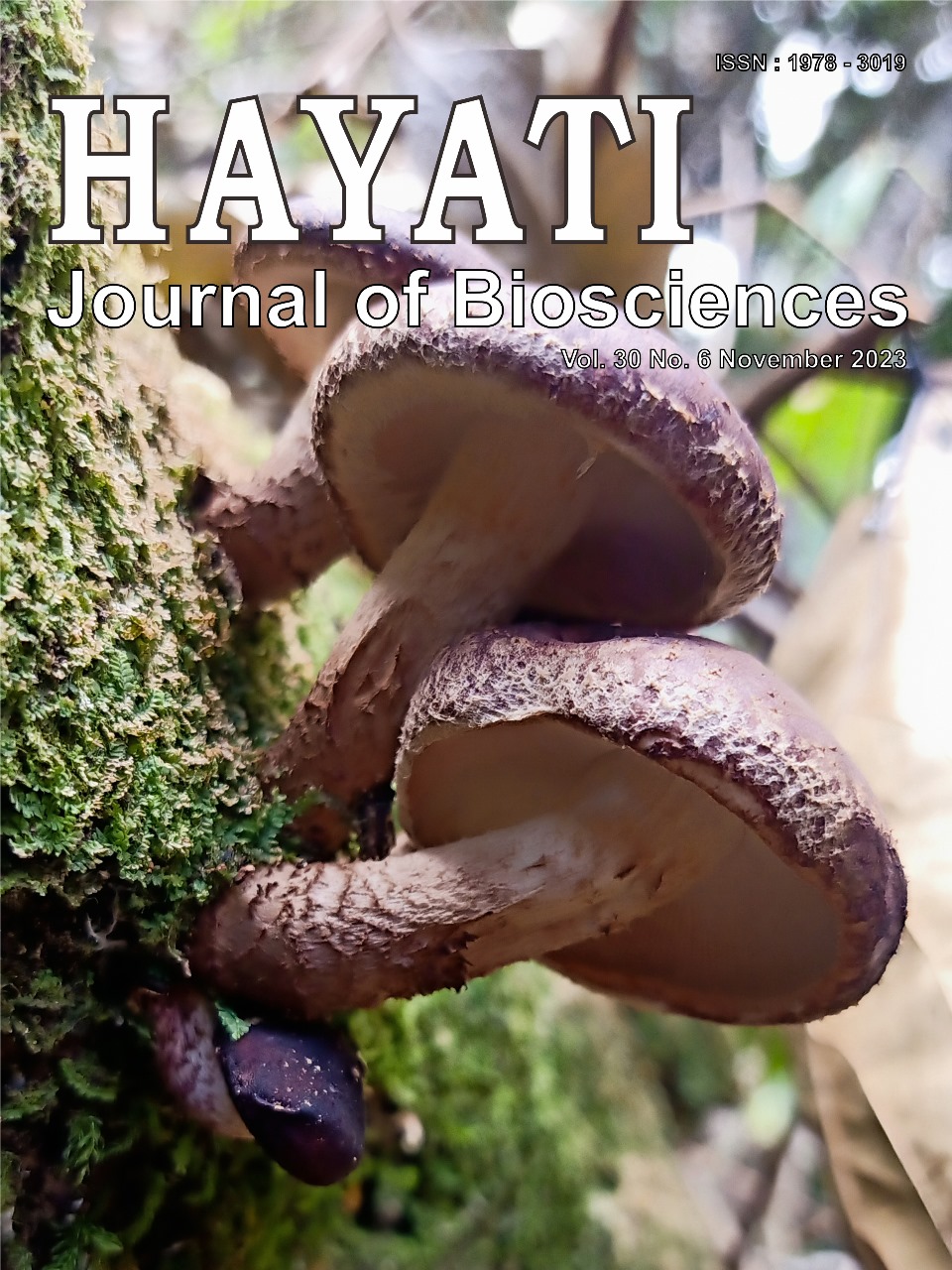Melissopalynology and Vegetation Analysis Surrounding Sunggau of Giant Honey Bee Apis dorsata in Belitung Regency
Abstract
The forest conversion into oil palm plantations in Belitung impacts the plant source for pollen and nectar to support the honey bee Apis dorsata. This study aimed to identify the plants used by A. dorsata as pollen sources in honey and bee bread in honey bee nests and to analyze the vegetation composition and structure surrounding the sunggau (artificial nesting site) in Belitung Regency. Honey from A. dorsata was collected from bee nests in sunggau on Kampak Island and Tanjung Rusa. The pollen grains from 20 ml honey were acetolysed and counted until 1,200 grains for each honey sample. In Kampak Island, we found eight pollen types in honey dominated by Rhizophora mucronate mangrove pollen and eleven pollen types in bee bread dominated by Melaleuca cajuputi. The pollen type in honey in Tanjung Rusa was similar to those in Kampak Island, and nine pollen types were found in the bee bread dominated by Elaeis guineensis. The vegetation analysis revealed that mangrove and heath forests in Kampak Island were dominated by Lumnitzera littorea and Melaleuca cajuputi, respectively. The results of this study confirm the bees' notable use of the mangrove ecosystem, which adds conservation value, especially in supporting bee management efforts in Belitung.
Downloads
Copyright (c) 2023 Dwika Bramasta, Ibnul Qayim, Nina Ratna Djuita, Rika Raffiudin, Ramadhani Eka Putra, RC Hidayat Soesilohadi, Hery Purnobasuki

This work is licensed under a Creative Commons Attribution-NonCommercial 4.0 International License.
HAYATI J Biosci is an open access journal and the article's license is CC-BY-NC. This license lets others distribute, remix, tweak, and build upon author's work, as long as they credit the original creation. Authors retain copyright and grant the journal/publisher non exclusive publishing rights with the work simultaneously licensed under a https://creativecommons.org/


















.png) IPB University
IPB University Department of Biology
Department of Biology The Indonesian Biological Society
The Indonesian Biological Society 

